2025 August
The Best Things to Do in Jeonju – Korea’s Charming Cultural Capital
(Map Included)
by Evi


Jeonju, the capital of North Jeolla Province, is often called the soul of Korean culture—and for good reason. Famous as the birthplace of bibimbap, this charming city blends rich culinary traditions with deep history, beautifully preserved architecture, and a warm, slow-paced atmosphere that feels worlds away from Seoul’s hustle. At its heart lies the Jeonju Hanok Village, where hundreds of traditional wooden houses transport you back in time, offering a glimpse into Korea’s heritage through tea houses, artisan shops, and cultural experiences. Add in vibrant street food, lively markets, and a reputation as a UNESCO City of Gastronomy, and Jeonju becomes a must-visit destination for travelers wanting to savor Korea beyond the big cities.


1. Jeonju Hanok Village & Hanbok Rental
This is the beating heart of Jeonju,a neighborhood of over 800 traditional hanok houses, beautifully preserved and still in use today. Unlike Seoul’s Bukchon Hanok Village, Jeonju’s version feels like an entire town frozen in time, with curved tiled roofs, wooden frames, and stone walls. The village was established during the Joseon Dynasty and remains a cultural hub to this day. For the full experience, rent a hanbok (traditional Korean attire) from one of the many shops here. Wandering the narrow streets in colorful garments makes for magical photos — and many attractions offer free or discounted entry if you’re dressed in hanbok.
2. Gyeonggijeon Shrine & Royal Portrait Museum
Built in 1410, Gyeonggijeon Shrine enshrines the portrait of King Tae-jo, the founder of the Joseon Dynasty. It’s one of the most important historical sites in Jeonju, symbolizing the city’s royal heritage. The shrine complex also houses the Royal Portrait Museum, where you can see portraits of various kings and learn about the meticulous preservation techniques used to keep them intact for centuries. The grounds are peaceful, dotted with centuries-old trees and traditional pavilions, a great place to slow down and soak up history.
Opening Hours: Gyeonggijeon Shrine 9 AM -6 PM Royal Portrait Museum 9 AM - 8 PM
3. Nambu Market
When the sun sets, Jeonju’s Nambu Market transforms into a bustling night market with food stalls, live performances, and local crafts. Established in the 1900s, it’s one of Korea’s oldest traditional markets, but at night it takes on a modern twist with creative street food like bibimbap croquettes, hotteok stuffed with ice cream, and cheesy grilled lobster. It’s the perfect spot to mingle with locals and taste flavors you won’t find anywhere else.
Opening Hours: 6 AM - 10:00 PM


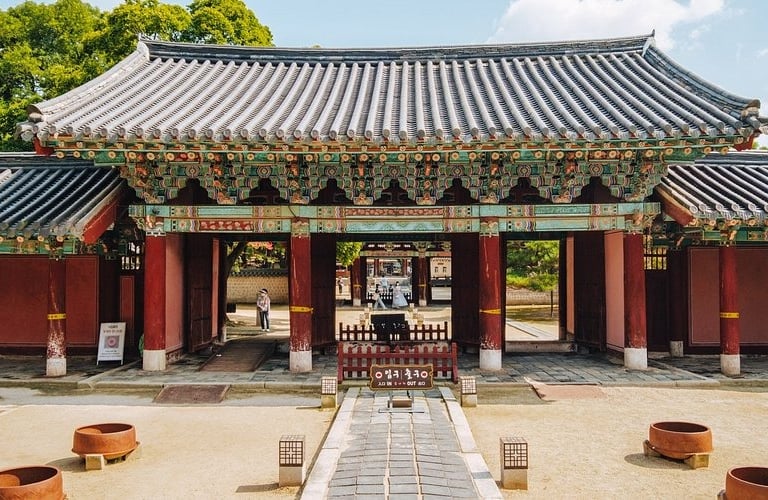

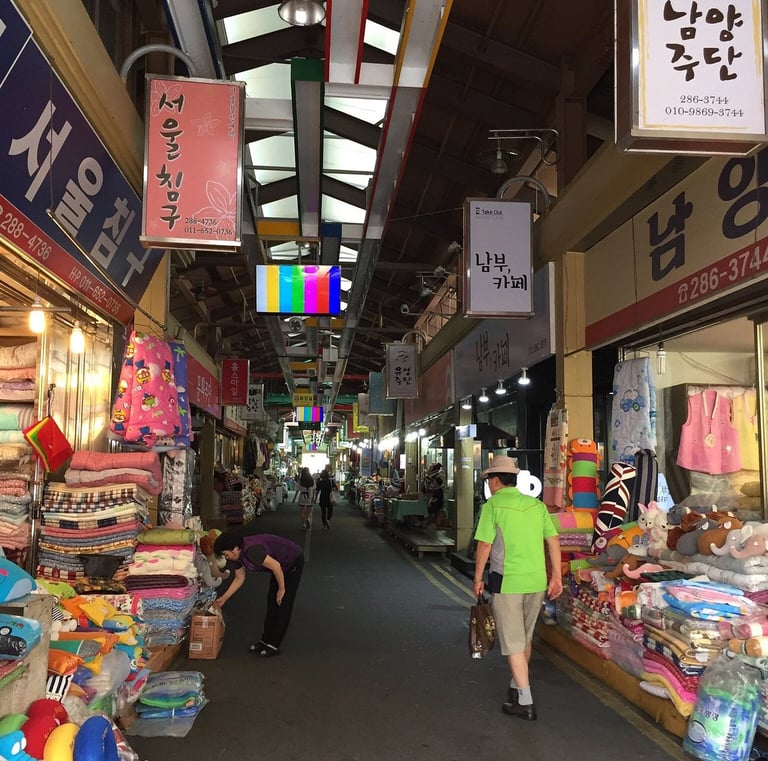

4. Jaman Mural Village
Perched on the hillside near Jeonju Hanok Village, Jaman Mural Village (sometimes called Jamsan) is an explosion of color and creativity. Once a quiet residential neighborhood, it was revitalized by local artists who painted the walls with vibrant murals, quirky characters, and pop culture references. Every corner offers a new surprise, and the views over Jeonju from here are spectacular.
5. Omokdae and Imogdae Hillside Shrines
These two shrines, located on opposite hills, are tied to Korea’s military history. Omokdae is where General Yi Seong-gye (later King Tae-jo) celebrated his victory over Japanese pirates in the late 14th century. Imogdae is slightly smaller but equally charming, offering a quieter vantage point over the hanok rooftops. The walk between the two is short and scenic perfect for a golden-hour stroll.
6. Jeondong Catholic Church
Built between 1908 and 1914, Jeondong Catholic Church is one of the most beautiful Western-style buildings in Korea. Designed by French priest Poinel, it was constructed on the site where Roman Catholic martyrs were executed in the 18th century, giving it deep historical and religious significance. The Romanesque-style red-brick façade and elegant domes make it a striking landmark right next to the entrance of Jeonju Hanok Village.
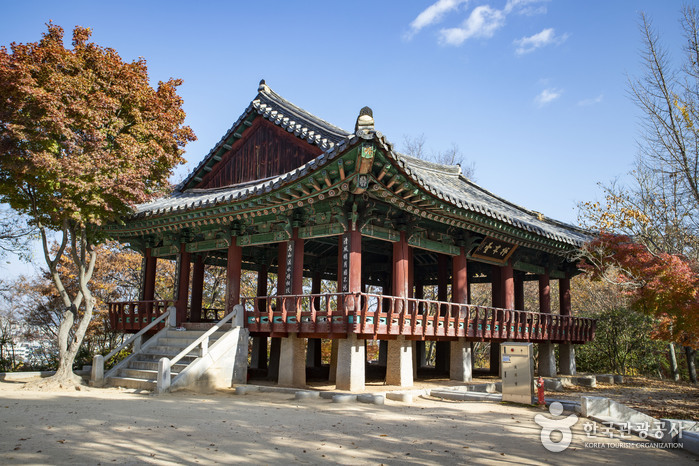

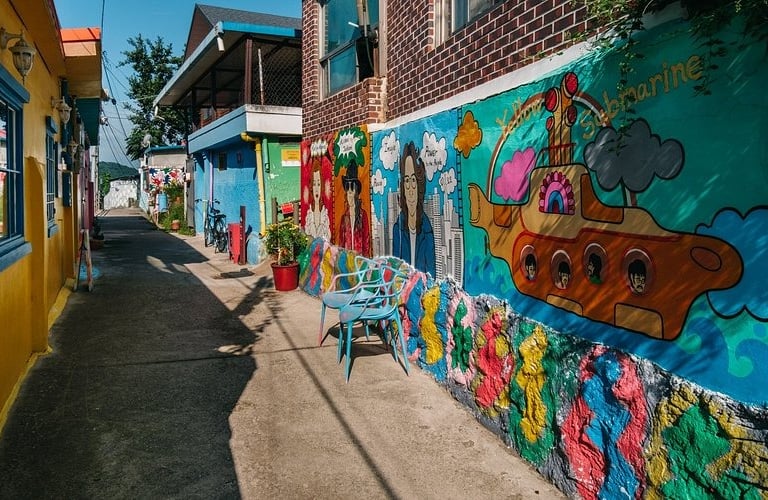

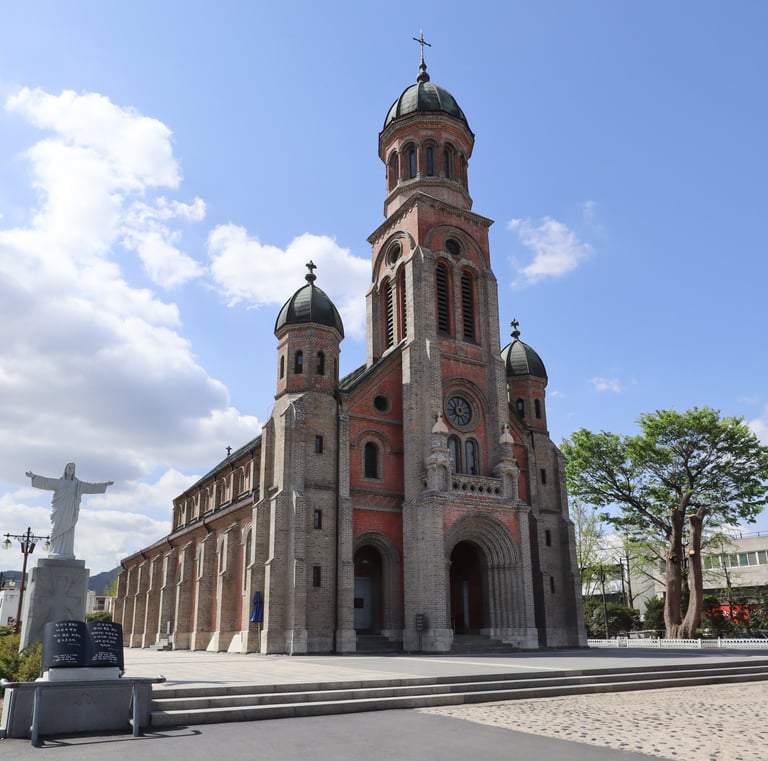

7.Jeonju Hyanggyo
Once a Confucian school established sometime early in the 15th century, during the Joseon Dynasty (1392-1910). At the time of the Second Japanese Invasion in 1592 the Gyeonggijeon Shrine and the Jeonju Hyanggyo were completely destroyed. In 1603 the Hyanggyo was moved to and rebuilt at its present Jeonju location. Jeonju Hyanggyo is a hidden gem where you can wander through centuries-old wooden buildings shaded by giant ginkgo trees. Unlike the more typical hyanggyo Jeonju Hyanggyo style employees the less conventional style of being placed on level ground. The memorial enshrinement area centers on the Daeseongjeon (Confucian shrine hall) in the front, while the educational area centers on the Myeongyundang (lecture hall) that is located the rear. This is an unusual configuration for a hyanggyo. In all, there are a total of 99 rooms at the Jeonju Hyanggyo. In autumn, the yellow leaves blanket the grounds in gold, it’s a photographer’s dream.
Opening Hours: 9 AM - 6 PM
Located right next to Jeonju Hyanggyo Confucian School, you will find the Ginkgo Tree Avenue. This picturesque street is lined with towering ginkgo trees which were planted during the Japanese colonial period in the early 20th century. In autumn (late October–mid-November), the entire stretch turns golden yellow and becomes one of the most photographed spots in the city. Even outside fall, it’s a relaxing place for a stroll and a great photo spot.
8. Pungnammun Gate
The last remaining gate of Jeonju’s old fortress wall, Pungnammun was built during the early Joseon period in 1734 and stands as a proud symbol of the city’s history. Pungnammun Gate was the southernmost gate among the four city gates of Jeonju. The structure was severely damaged by fire in 1767, followed by the restoration of the gate tower afterwards. The gate was burnt down once again during the Imjin War and was restored to the gate that is seen today. It’s especially beautiful when lit up at night, with the old gate contrasting against the modern city backdrop.
9.Cheongyeollu Pavilion & Namcheongyo Bridge
Located along the Jeonju River, Cheongyeollu Pavilion was built as a resting place for scholars, offering panoramic views of the water and surrounding hills. Right nearby, Namcheongyo Bridge is an elegant stone bridge that’s been connecting locals for centuries, a peaceful spot to slow down and take in the scenery.
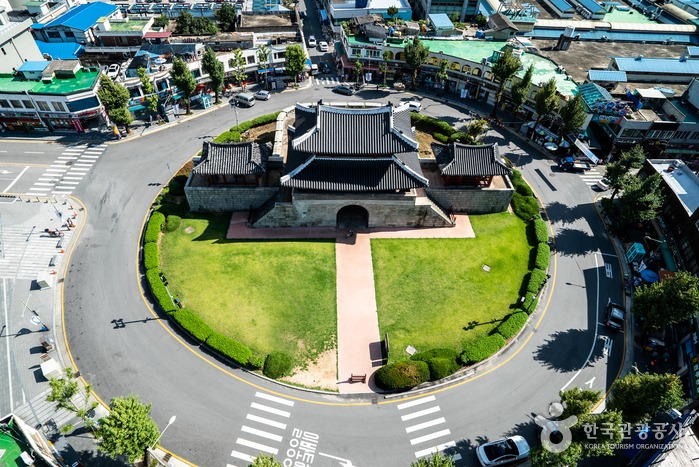

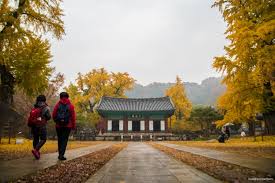

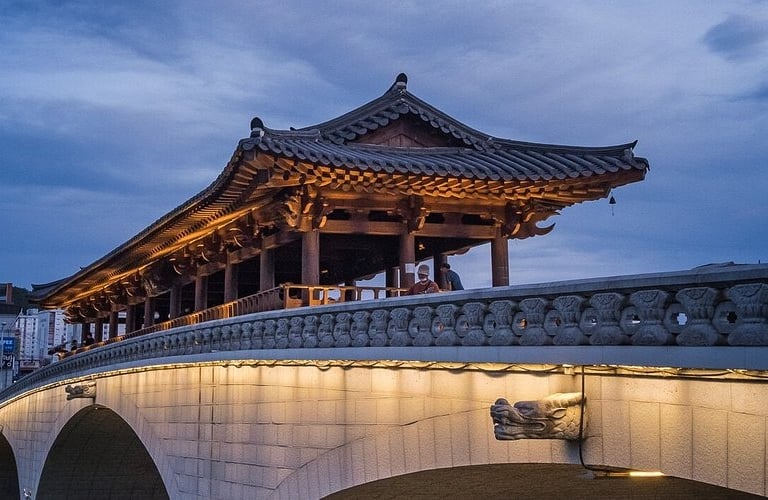

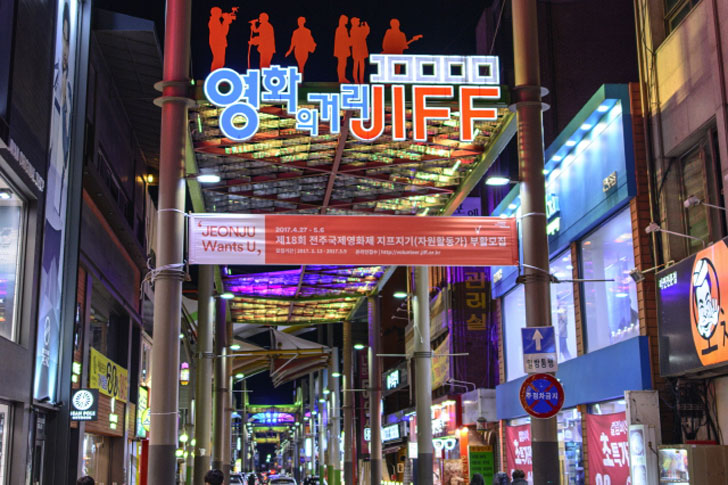

10. Jeolla Gamyeong
Once the provincial government office during the Joseon Dynasty, Jeolla Gamyeong is a fascinating look at Korea’s administrative past. It served as the administrative, judicial, and military center for the Jeolla province for over five centuries. The original buildings were destroyed during the Korean War, but a smaller replica was opened to the public in 2020. It’s less crowded than other attractions, making it a hidden gem for history buffs.
Opening Hours: 9 AM - 9 PM Admission Free
11. Gaekridan-gil Road & Jeonju City Centre
Think of Gaekridan-gil as Jeonju’s trendy younger sibling full of hip cafés, boutique shops, and craft beer spots. It’s a refreshing contrast to the traditional vibe of the hanok village and a great place for a modern twist on your Jeonju trip.
12. Ajung Lake
A peaceful escape from the busier parts of Jeonju, Ajung Lake is perfect for a relaxing walk or bike ride. It’s especially beautiful at sunrise and sunset, and you can even rent paddle boats when the weather is nice.
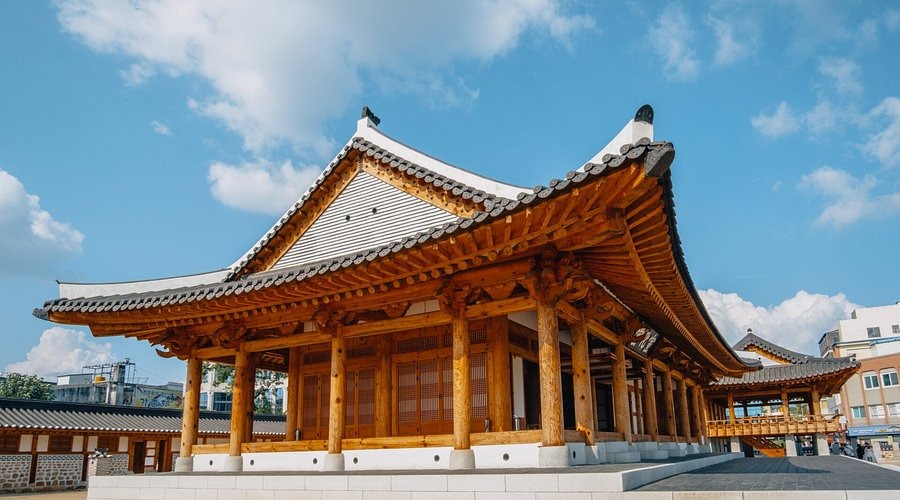

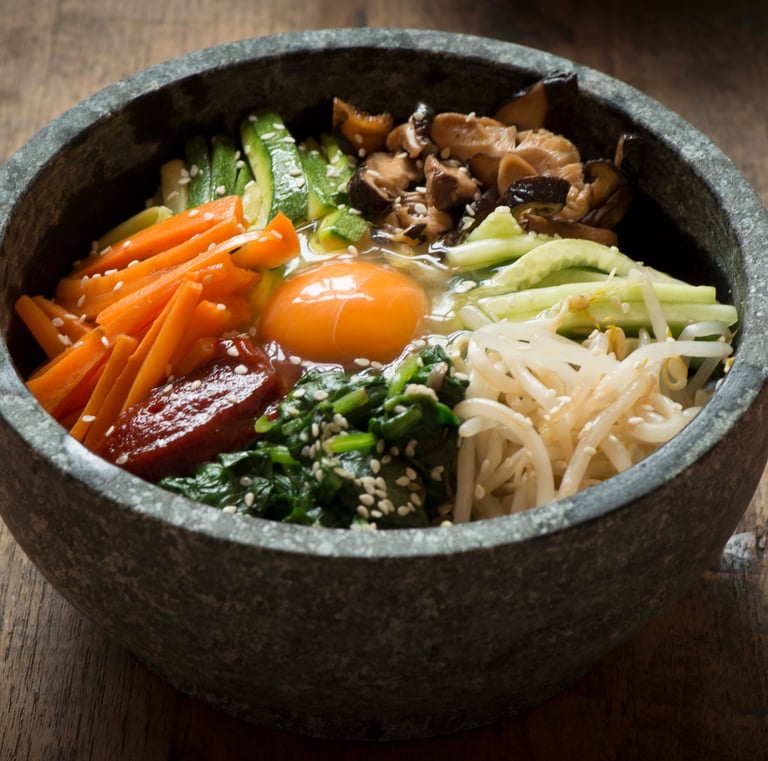

13. Try Bibimbap, Kalguksu, and Mandu
You can’t leave Jeonju without trying its most famous dish Jeonju Bibimbap. Unlike other versions, it’s made with a unique combination of seasoned vegetables, marinated beef, gochujang (red pepper paste), and a raw egg yolk, all over warm rice. For something hearty, try kalguksu, handmade knife-cut noodles in a rich broth, often served with fresh dumplings (mandu). Many restaurants in the hanok village specialize in these comfort foods, and they taste even better after a day of exploring.
Where to eat in Jeonju:
If you want to taste Jeonju’s legendary flavors, you can’t go wrong with a few iconic spots. Start with Hankook Jib, the go-to place for authentic Jeonju Bibimbap, served in a hot stone bowl with a rainbow of fresh vegetables, perfectly seasoned beef, and a spicy-sweet gochujang kick. Another option is Family House, also beloved for its bibimbap.
For comfort food heaven, head to Veteran Kalguksu, famous for its silky handmade noodles in rich broth, plus its mouthwatering dumplings (mandu). If you’re in the mood for something a bit different, check out Waeng-i Kongnamul Gukbap, where steaming bowls of bean sprout soup with rice (Kongnamul Guk) warm both body and soul—a true Jeonju classic.
And for dessert, don’t skip PNB Bakery, home of the original choco pie, a local legend since 1951.
Jeonju also shines with its café culture. Stop by Manchu Cafe, a cozy and beautifully designed spot known for its seasonal drinks and cakes, perfect for winding down after exploring Hanok Village. Or try Ireuri Cafe, a sleek and airy café that serves excellent coffee and handmade desserts, a favorite hangout among locals.
In Jeonju, every meal (and every coffee stop) feels like a culinary hug.
All places are mentioned in the map included in this post.


How to Get to Jeonju
From Seoul: The fastest option is the KTX high-speed train from Seoul Station to Jeonju Station, taking around 1 hour 30 minutes.
You can book your train ticket from the official website here
You can also take an express bus from Central City Terminal or Nambu Terminal which takes about 3 hours. You can book your bus ticket here
There are very frequent routes so you don't necessarily need to book your tickets in advance. You can book your ticket when you arrive at the station.
From Busan: Take the KTX from Busan Station to Iksan, then transfer to a regular train or bus to Jeonju (total travel time around 3.5–4 hours). Alternatively, express buses run from Busan to Jeonju in about 4 hours 30 minutes.


Getting Around in Jeonju
Jeonju is a compact city, so getting around is pretty easy. Most of the main attractions, like Jeonju Hanok Village, Gyeonggijeon Shrine, and Jeondong Catholic Church, are within walking distance of each other.
If you’re arriving by KTX or regular train, Jeonju Station is about a 10–15 minute taxi ride (or a short local bus ride) to the hanok village.
From the Express Bus Terminal, it’s even closer, just 5–10 minutes by taxi.
For public transport, local buses are cheap and frequent, and T-money cards work here too. For convenience, download Kakao T or T Map Taxi for hailing rides — both have English options and make it easy to pay by card.


Where to Stay in Jeonju
For the ultimate Jeonju experience, stay in a traditional hanok guesthouse inside Jeonju Hanok Village. Sleeping on a heated floor (ondol) with sliding paper doors and wooden beams gives you a true taste of Korean tradition and waking up to the sound of temple bells or the aroma of fresh street food is pure magic. Many hanoks offer modern comforts like private bathrooms and Wi-Fi while preserving their old-world charm.
If you prefer a standard hotel, you’ll find modern accommodations near Jeonju Station or downtown, ranging from boutique hotels to budget-friendly business hotels. But if it’s your first time here, a night in a hanok is a must.


Why Stay the Night in Jeonju
While many travelers try to squeeze Jeonju into a day trip from Seoul, the city truly comes alive when the day-trippers leave. At night, Jeonju Hanok Village glows under warm lanterns, the streets become peaceful, and you can enjoy a quiet stroll without the daytime crowds. Staying overnight means you can take your time exploring hidden alleys, enjoy a leisurely dinner of bibimbap and makgeolli, and wake up to the gentle charm of a traditional hanok. A day tour simply can’t capture the slow, atmospheric beauty of Jeonju after dark — spending the night lets you experience the city as it’s meant to be enjoyed.
Drop us a comment bellow
Check our other post for South Korea
The Best Things to Do in Jeonju – Korea’s Charming Cultural Capital (Map Included)
Jeonju, located in North Jeolla Province, is often called the “food capital of Korea” and the birthplace of the world-famous bibimbap. But it’s more than just delicious meals — it’s also a city bursting with traditional architecture, artistic vibes, and deep history. From strolling through its famous hanok village to tasting the best street food, here are the top experiences you shouldn’t miss in Jeonju.
Evi
8/13/20259 min read
